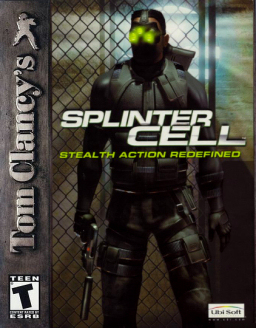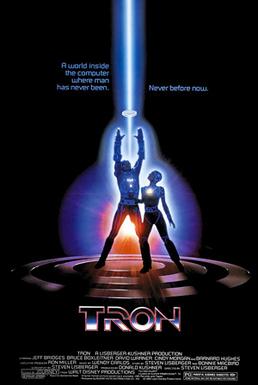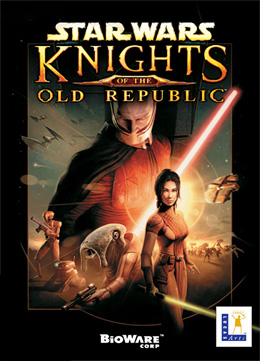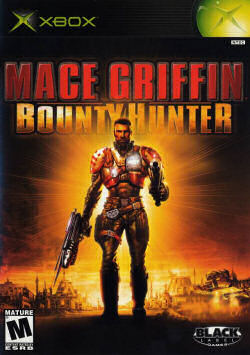Microsoft Windows is a product line of proprietary graphical operating systems developed and marketed by Microsoft. It is grouped into families and sub-families that cater to particular sectors of the computing industry – Windows (unqualified) for a consumer or corporate workstation, Windows Server for a server and Windows IoT for an embedded system. Defunct families include Windows 9x, Windows Mobile, Windows Phone, and Windows Embedded Compact.

Jeff Minter is an English video game designer and programmer who often goes by the name Yak. He is the founder of software house Llamasoft and has created dozens of games during his career, which began in 1981 with games for the ZX80. Minter's games are shoot 'em ups which contain titular or in-game references demonstrating his fondness of ruminants. Many of his programs also feature something of a psychedelic element, as in some of the earliest "light synthesizer" programs including Trip-a-Tron.
A killer application is any software that is so necessary or desirable that it proves the core value of some larger technology, such as its host computer hardware, video game console, software platform, or operating system. Consumers would buy the host platform just to access that application, possibly substantially increasing sales of its host platform.

Tom Clancy's Splinter Cell is a 2002 stealth game developed by Ubi Soft Montreal and published by Ubi Soft. It is the first game in the Splinter Cell series. Endorsed by author Tom Clancy, it follows the activities of NSA black ops agent Sam Fisher. The game was inspired by both the Metal Gear series and games created by Looking Glass Studios, and was built using Unreal Engine 2.

Tron is a 1982 American science fiction action adventure film written and directed by Steven Lisberger from a story by Lisberger and Bonnie MacBird. The film stars Jeff Bridges as Kevin Flynn, a computer programmer and video game developer who is transported inside the software world of a mainframe computer where he interacts with programs in his attempt to escape; it also stars Bruce Boxleitner, David Warner, Cindy Morgan, and Barnard Hughes. Tron, along with The Last Starfighter, was one of cinema's earliest films to use extensive computer-generated imagery (CGI).

Max Payne is a 2001 third-person shooter game developed by Remedy Entertainment. It was originally released for Windows by Gathering of Developers in July 2001, and was later ported by Rockstar Games to the PlayStation 2 and Xbox in December 2001, and by MacSoft and Feral Interactive to Mac OS X in July 2002. A version of the game for the Game Boy Advance, featuring an isometric perspective but retaining most of the original's gameplay elements, was released by Rockstar in December 2003, and an enhanced port for mobile devices was published in 2012 to coincide with the release of Rockstar's Max Payne 3. A Dreamcast version of the game was also planned, but was canceled due to the discontinuation of the console in 2001. Max Payne was also made available on Xbox 360 as part of Xbox Originals program in 2009, on PlayStation 3 as a PS2 Classic in 2012, on PlayStation 4 in 2016, and on Xbox One and Xbox Series X/S in 2021, due to the consoles' respective backward compatibility and emulation features.

Star Wars: Knights of the Old Republic is a role-playing video game developed by BioWare and published by LucasArts. The first installment of the Star Wars: Knights of the Old Republic series, it was released for the Xbox on July 16, 2003, and for Microsoft Windows on November 19, 2003. It was ported to Mac OS X, iOS, and Android by Aspyr, and it is playable on the Xbox 360, Xbox One, and Xbox Series X and Series S via backward compatibility. A Nintendo Switch version was released on November 11, 2021.

James Bond 007: Nightfire is a 2002 first-person shooter video game published by Electronic Arts for the GameCube, PlayStation 2, Xbox and Microsoft Windows, with additional versions released for the Game Boy Advance in 2003, and Mac OS X in 2004. The computer versions feature modifications to the storyline, different missions, and the removal of driving sections used in home console versions.

Tron is a coin-operated arcade video game manufactured and distributed by Bally Midway in 1982. The game consists of four subgames inspired by the events of the Walt Disney Productions motion picture Tron released earlier in the summer. The lead programmer was Bill Adams. The music programmer was Earl Vickers.

Tiger Woods PGA Tour 2004 is a sports video game developed by EA Redwood Shores for the GameCube, PlayStation 2 and Xbox versions, Headgate Studios for the Microsoft Windows version, and Backbone Emeryville for the Game Boy Advance and N-Gage versions, and published by EA Sports for GameCube, PlayStation 2, Windows, Xbox, Game Boy Advance and N-Gage.

CSI: Crime Scene Investigation is a video game based on the CSI: Crime Scene Investigation television series. The game was developed by Radical Entertainment, published by Ubi Soft, and was released for the PC in 2003. It was also ported by EPCConnect, and published by Aspyr on the Macintosh.

Mace Griffin: Bounty Hunter is a first-person shooter video game developed by Warthog Games, published by Black Label Games and released for the PlayStation 2, Xbox and Microsoft Windows. A GameCube version was in development, but was cancelled.

NHL 2002 is a video game released by EA Sports in 2001. It is the predecessor to NHL 2003. The game's cover man is Pittsburgh Penguins superstar and owner Mario Lemieux, who had just made a comeback after being retired for three and a half years. It was the first installment of the NHL series to be released on Xbox.

The Xbox is a home video game console manufactured by Microsoft that is the first installment in the Xbox series of video game consoles. It was released as Microsoft's first foray into the gaming console market on November 15, 2001, in North America, followed by Australia, Europe and Japan in 2002. It is classified as a sixth-generation console, competing with Sony's PlayStation 2, Sega's Dreamcast and Nintendo's GameCube. It was also the first major console produced by an American company since the release of the Atari Jaguar in 1993.

Tron: Legacy is a 2010 American science fiction action film directed by Joseph Kosinski from a screenplay by Adam Horowitz and Edward Kitsis, based on a story by Horowitz, Kitsis, Brian Klugman, and Lee Sternthal. It serves as a sequel to Tron (1982), whose director Steven Lisberger returned to co-produce. The cast includes Jeff Bridges and Bruce Boxleitner reprising their roles as Kevin Flynn and Alan Bradley, respectively, as well as Garrett Hedlund, Olivia Wilde, James Frain, Beau Garrett, and Michael Sheen. The story follows Flynn's adult son Sam, who responds to a message from his long-lost father and is transported into a virtual reality called "the Grid", where Sam, his father, and the algorithm Quorra must stop the malevolent program Clu from invading the real world.

Tron: Evolution is a 2010 action-adventure game published by Disney Interactive Studios. It serves as a tie-in to the 2010 film Tron: Legacy, with its game taking place before the events of the film. It was announced at the 2009 Spike Video Game Awards and was released for Microsoft Windows, Xbox 360, PlayStation 3, and PlayStation Portable. It was released on November 25, 2010, in Australia, November 26, 2010, in Europe, and December 7, 2010, in North America and Asia.
Tron is an American science fiction media franchise created by Steven Lisberger and Bonnie MacBird. It began with the eponymous 1982 film produced by Walt Disney Pictures. The original film portrays Jeff Bridges as Kevin Flynn, a genius computer programmer and video game developer who becomes transported inside a digital virtual reality known as "The Grid", where he interacts with programs in his quest to escape.

The Microsoft Store is a digital distribution platform operated by Microsoft. It was created as an app store for Windows 8 as the primary means of distributing Universal Windows Platform apps. With Windows 10 1803, Microsoft merged its other distribution platforms into Microsoft Store, making it a unified distribution point for apps, console games, and digital videos. Digital music was included until the end of 2017, and E-books were included until 2019.















